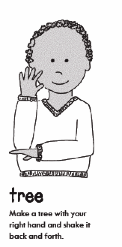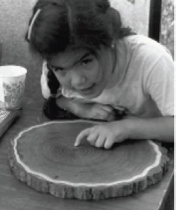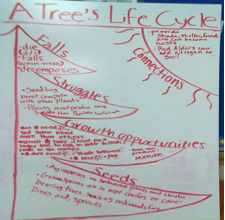How can teachers divide their time,  resources, and efforts to effectively instruct students of diverse backgrounds and interests? How can teachers ensure that every child has opportunities to develop his or her individual talents? How can teachers create lessons that will be effective for students with different academic skills and readiness levels?
resources, and efforts to effectively instruct students of diverse backgrounds and interests? How can teachers ensure that every child has opportunities to develop his or her individual talents? How can teachers create lessons that will be effective for students with different academic skills and readiness levels?
In order to address the range of skills and needs of students in today’s diverse classroom, teachers need to develop and use varied teaching and assessment strategies. Differentiated instruction is one such technique that provides students with different avenues for acquiring and processing content. Differentiation entails identifying both the appropriate entry points for learning as well as the appropriate exit points for students to express their learning (Gardner, 1999).
Project Learning Tree encourages teachers to provide students with multiple options for taking in information, processing ideas, and expressing what they have learned — both in the classroom and outdoors. We include suggestions for differentiated instruction in all our curriculum materials. In the PreK-8 Guide, for example, differentiated instruction methods are noted in the sidebar of each PLT activity, and are identified within each activity by this icon: ![]()
Described below are eight techniques for differentiated instruction methods. Try these techniques to reach every type of learner. The gifted and talented student, the student with disabilities, the student who lacks motivation, and the student who has not yet mastered the English language require customized (or differentiated!) instruction to provide appropriate learning entry and exit points.

1. Key Vocabulary
Educators work with students to help them identify, recognize, develop, and use new terminology. A glossary of vocabulary exists in all of PLT’s curriculum materials and glossary terms are found in bold and italics within the curriculum’s text. Consider matching key vocabulary with one of the other differentiated instruction techniques below to engage all your students. Create a jeopardy or memory/match game to learn and review key vocabulary terms.
2. Prior Knowledge Links
This technique taps into students’ prior experiences and knowledge. Have students interview each other to learn about their own individual experiences in reference to a certain topic. You can also address pointed questions to the entire group, such as:
- Have you ever visited a forest? What was it like? Did you like it? (PreK-8 Activity 8, The Forest of S.T. Shrew)
- Where does rain come from? Where do puddles go when they dry up? (PreK-8 Activity 44, Water Wonders)
- Are trees alive? How do you know? (PreK-8 Activity 79, Tree Lifecycle)
3. Paired and Cooperative Learning
Combine students with varying learning abilities, interests, language proficiencies, or other skill strengths into groups of two or more to provide peer support throughout a lesson. You may want to alter the makeup of working groups according to the activity at hand, e.g. sometimes heterogeneous grouping is appropriate, where at other times, same-language or more homogenous groups may work best.
This group of students (pictured left) is working together to measure tree height and diameter on their school grounds (Activity 1, Monitoring Forest Health in PLT’s Focus on Forests secondary module). Once back in the classroom, they will use a carbon calculator to estimate the amount of carbon stored within the trees (Activity 8, Climate Change and Forests).
 4. Nonlinguistic Representations
4. Nonlinguistic Representations
Help students learn using modalities other than the printed word, such as singing, role-playing, sketching, taking photographs, etc. Try teaching a few words using American Sign Language and challenge students to communicate their observations without words (for example, see Early Childhood Activity 2, Sounds Around). Create a visual graphic organizer to collect and display data (Early Childhood Activity 5, Signs of Fall), or use picture flash cards to learn a few words in a new language (PreK-8 Activity 13, We All Need Trees).
5. Realia and Hands-on Learning
Provide students with tangible objects to illustrate what is being discussed, and get students to participate through the use or creation of materials to engage multiple learning modalities. For example, have students collect leaves and create representations of animals and insects using the natural shapes they find (Early Childhood Activity 5, Signs of Fall). Use tree parts when discussing a tree lifecycle, or have students count the rings of a cross-section to determine tree age (PreK-8 Activity 76, Tree Cookies).
6. Curricular and Personal Connections
Help students make connections with other content and discipline areas by relating new concepts to previously learned ones. This can be accomplished using group questioning, hands-on realia, or a more formal assessment. For example,
- Have students describe animals or plants that they have seen with unusual characteristics, and discuss how these life forms benefit from them. (PreK-8 Activity 11, Can It Be Real?)
- Have students make a model of a tree using common classroom objects, then label all the tree parts they have learned about. (PreK-8 Activity 61, The Closer You Look)
- What do you do with your trash? Where does it go after it leaves your curb? What are the pros and cons of landfills? (PreK-8 Activity 37, Reduce, Reuse, Recycle)
 7. Oral, Reading, and Writing Skills
7. Oral, Reading, and Writing Skills
Encourage students to integrate the three learning modalities of speaking, reading, and writing. For example, challenge students to visually depict a tree’s lifecycle and present their interpretation to the class (PreK-8 Activity 79, Tree Life Cycle).
 Get students to investigate their school’s energy or water use, and present their findings to their classmates, school administration, or the community.
Get students to investigate their school’s energy or water use, and present their findings to their classmates, school administration, or the community.
8. Higher Order Thinking
Challenge students to go beyond comprehension of basic material by moving them toward more abstract reasoning, such as making inferences, predictions, and appropriate connections. This can also be accomplished using group questioning or a more formal assessment. For example,
- What happens when we remove a link in the forest ecosystem? (PreK-8 Activity 13, We All Need Trees)
- What are the advantages and disadvantages of using this particular energy source? (PreK-8 Activity 39, Energy Sleuths)
- How might the change in atmospheric CO2 levels affect the global society? (PreK-8 Activity 84, The Global Climate)
References:
Gardner, H. (1999). Intelligence reframed: Multiple intelligences for the 21st century. NewYork: Basic Books.
For more information, including working with exceptional and gifted students, and English Language Learners (ELLs), see Appendix 7 in Project Learning Tree’s PreK-8 Environmental Education Activity Guide.


